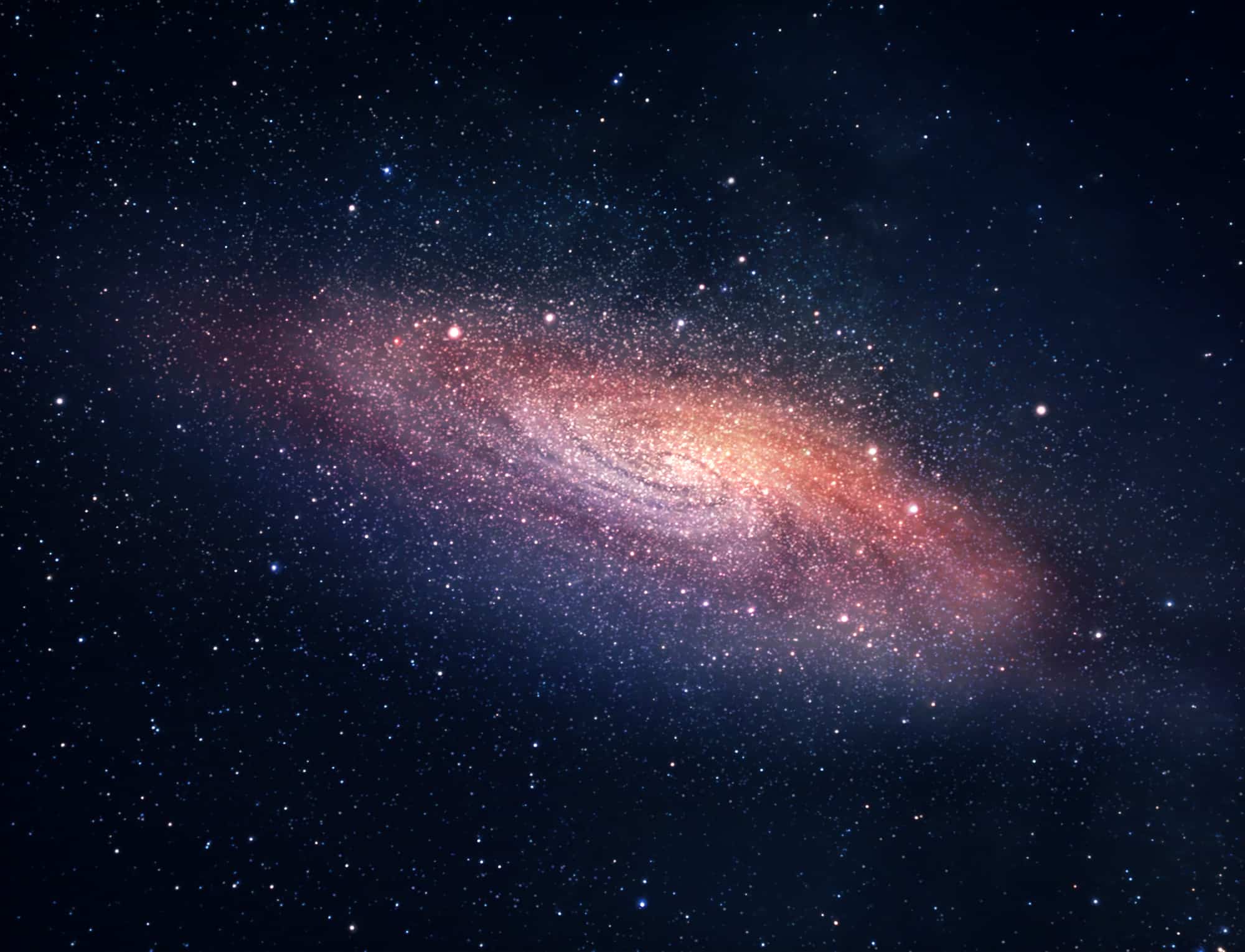In the 1960s, there was a heated debate going on between two opposing cosmological theories, which tried to explain the origin of the universe - the Big Bang theory and the Steady State theory. But before either of these theories existed, people believed in the static universe theory.
The static universe theory
They believed that the universe was neither expanding nor contracting. It had always existed the same way forever and was infinite in space and time. But Isaac Newton's discovery of gravity in the seventeenth century challenged this belief.
Isaac Newton's law of gravitation
Newton discovered that every body in this universe attracts every other body in the universe. The force with which two bodies attract each other is proportional to the product of their masses and inversely proportional to the square of the distance between them.
To understand the impact of Newton's theory on the static model of the universe, consider doing an experiment. Take a stone and throw it up towards the sky. Initially, the stone is at rest on your hand. Hence, the speed with which the stone is pulled down (negative velocity) due to gravitational acceleration is zero. So, at the moment you throw the stone, the speed with which you throw the stone, directed upwards (positive velocity), will be greater than the speed with which gravity pulls it, directed downwards. Therefore, the stone goes upwards.
But as the stone goes up, the velocity of the stone decreases due to the gravitational acceleration pulling it down. At one point in time, the stone stands still in the sky. At this instant, the force of gravity would have completely canceled out the force of the throw. After this instant, the stone starts moving downwards, with its speed increasing every second.
Thus, at any point, the stone is either moving up or moving down. It does not stay static, except for only one instant. But even this one instant is not a stable state, meaning that the stone cannot stay there for a long time.
Now, if you throw the stone up with a greater force, it goes higher up but eventually comes down. If you throw the stone with an extremely large force (more than 11km/s), it will keep going up. It will eventually escape the earth's atmosphere and never return.
If you extend this concept to astronomical bodies, then one can understand that any two objects will either constantly move towards each other or away from each other. They cannot stay at a constant distance from each other indefinitely. Thus, Newton's law of gravity challenged the notion of a static universe significantly.
Newton himself was also aware of the consequences of his theory. But he believed that God had placed the astronomical bodies like stars in perfect numbers and distances from each other. So, the gravitational forces exerted on each astronomical body by all the other astronomical bodies are canceled out. Hence, even though they were unstable, the stars remained in balance, just like a needle balanced on a single point. Thus, the entire universe managed to remain static for an infinite time.
Newton's law of gravitation was a huge step for mankind. But it did have its flaws. For starters, even Newton didn't understand how gravity could act without a medium. Moreover, there were some astronomical occurrences that his law of gravitation couldn't explain. Yet, despite its flaws, it was widely accepted for a very long time.
But two hundred years later, a physicist called Albert Einstein disproved Newton's law of gravitation and postulated his own theory explaining gravity called the theory of general relativity.
Albert Einstein's theory of general relativity
Albert Einstein postulated that space, time, and mass were related. So, any object with mass warps, bends, or stretches the space and time around it. This warping action is the cause of all gravity. You would understand this if you have seen the movie Interstellar, where time runs faster when the hero nears a black hole. Because of its extreme mass, the black hole accelerates time when passing near it.
To understand this phenomenon, imagine two people standing opposite each other, each holding one of the two opposite edges of a big sheet. If these two people move away from each other, then the sheet will get outstretched up until the point when the entire sheet lies on a single plane. Now, if a third person drops a football in the middle of the sheet, you can imagine what would happen. The sheet would be pulled downwards, with the amount of pull greater in the middle and decreasing towards the edges. The heavier the football, the higher the force with which it pulls the sheet down. Now, if you drop a small object, maybe a tennis ball, on any location on the sheet, it would eventually move towards the middle, where the football is.
Now think of the sheet as the spacetime and the football as a star. Just like in the experiment above, the star would bend/warp the spacetime around it due to its mass. The heavier the star, the greater its bending/warping will be. And any other object in the vicinity will be pulled towards it, thus creating the effect of gravity.
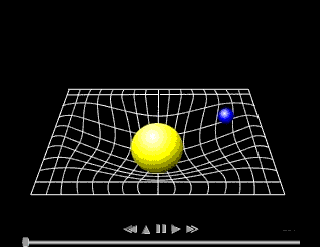
Source - www.theperihelioneffect.com
At this point, you may be wondering what has Einstein's theory of general relativity got to do with the origin of the universe. Actually, it has got a lot to do with the universe and its origin.
According to Einstein's theory of general relativity, a massive object stretches the spacetime around it. And when light travels through this spacetime, it ends up getting stretched too. As it travels through this stretched spacetime more and more, it gets stretched more and more. As a result, its wavelength increases, and the light becomes red in color since red has the longest wavelength. This phenomenon is called cosmological redshift.
The big bang theory
Einstein's theory of general relativity made a huge impact on the scientific community. It changed many people's understanding of the universe. One of those people was a Belgian priest called Georges Lemaître. Since he was a kid, Lemaître had had an interest in finding out how things around him worked.
In 1915, when Einstein published his theory of general relativity, impressed by it, Lemaître started studying it. In 1927, he deduced that if Einstein's theory was true, then the universe was not static; it was expanding in all directions. But he did not have any data to prove this. So, not many people believed in his theory. Even Einstein, who was a firm believer of the static universe, did not endorse Lemaître's interpretation of his theory.
Edwin Hubble
Until 1919, the common perception was that our milky way galaxy was the only galaxy in the entire universe. But in 1919, while investigating the night sky using the Hooker telescope, the largest telescope at that time, Edwin Hubble found that several dust clouds, which were previously considered part of the milky way galaxy, were actually much, much farther away. Hence, he argued that they couldn't be part of the milky way galaxy. They could only be entire galaxies, which were very far away. Thus, Hubble showed that the universe was made up of many galaxies, not just our own galaxy.
In 1929, unaware that Lemaître had proposed a theory of an expanding universe based on Einstein's theory of general relativity, Hubble made a remarkable discovery. At that time, Hubble was investigating the cosmological redshift from various galaxies. He discovered that the amount of redshift in the light from a galaxy was proportional to its distance from earth. This indicated that other galaxies were moving away from us. Moreover, the speed with which a galaxy was moving away from us was proportional to its distance from earth, i.e., the farther a galaxy was, the faster it was moving away. These findings led him to take the only possible logical deduction - The universe was expanding. Even though this is the same conclusion Lemaître had arrived at two years earlier, Hubble was credited for discovering that the universe was expanding.
The Hypothesis of the Primeval atom
But Lemaître used Hubble's findings to propose something that faced strict opposition initially. He proposed that since the universe was expanding, it would have been smaller in the past. So, if we went back in time, long, long ago, the universe would have been an extremely dense but tiny object. Lemaître called this tiny object the Primeval atom. As it was extremely dense, at some point, the Primeval atom would have exploded suddenly. This explosion created space, time, and expansion, which continues to this day.
Lemaître's theory had a profound impact on the way people viewed the universe. Moreover, it gave rise to philosophical questions, like, if the universe did begin with an explosion, what created the explosion in the first place.
Today, we call Lemaître's theory the big bang theory. However, Lemaître did not call his theory the big bang theory. He called it the "hypothesis of the primeval atom." The term 'Big Bang' was actually coined by Fred Hoyle. (Fred Hoyle is the scientist under whose supervision Stephen Hawking wanted to do his Ph.D. degree. But Hoyle declined Hawking because he already had enough students working under him.)
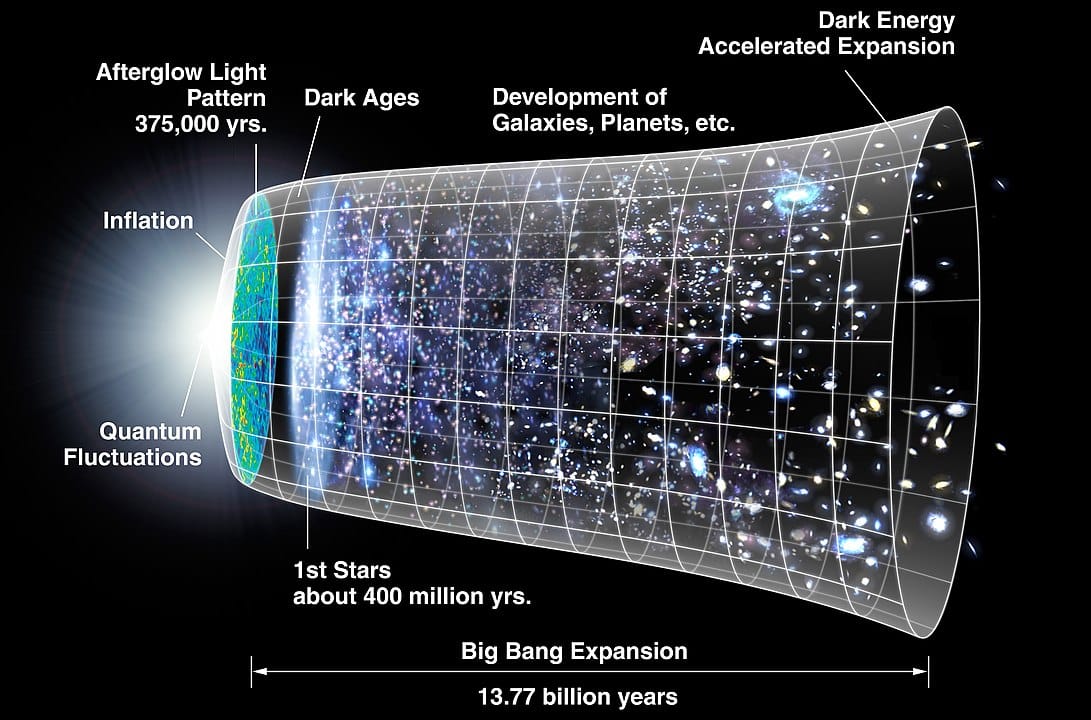
An illustration of how the Big Bang might have happened - By NASA/WMAP Science Team - Original version: NASA; modified by Cherkash, Public Domain, Link
Fred Hoyle
Fred Hoyle was one of those people who vehemently opposed the big bang theory. Indeed, he coined the term 'Big Bang' as a way to mock Lemaître's theory. During an interview for BBC Radio in 1949, he said,
These theories were based on the hypothesis that all the matter in the universe was created in one big bang at a particular time in the remote past.
But the term he coined became famous in the 1970s and has stayed so since then.
But it is not hard to understand why many people opposed the Big Bang theory at that time. Most people at that time believed in a static universe. So, Lemaître's proposal that the universe had a beginning was simply not acceptable for them. Moreover, there was no evidence to back his theory. But one of the major reasons why people were not willing to believe his theory was due to his religious background.
By claiming that the universe began from the primeval atom, Lemaître was indicating that something had somehow created the primeval atom in the first place, thus opening the possibility of the existence of a greater being. In 1952, when Pope Pious XII proclaimed that Lemaître's theory confirmed the existence of the transcendental creator, it cemented many people's beliefs that Lemaître's religious beliefs were the motivation for his theory, thus reducing the credibility of this theory. Even though Lemaître affirmed that his religious background had nothing to do with his scientific theory, nobody believed him.
So, it is no wonder that for Fred Hoyle, who was an ardent atheist, Leimatre's theory appeared unbelievable. Fred Hoyle instead believed in the steady-state model of the universe, which he and two other scientists had developed.
The steady-state theory
According to the steady-state theory, changes take place in the universe, but only on a smaller scale. When taken as a whole, however, the universe had always been the same at all times. To put it simply, the steady-state theory states that the universe doesn't change over time.
But Hubble showed that the universe was expanding. The steady-state theory got around this by stating that as old galaxies disappear (either due to their increasing distance from earth or because they disintegrate into neutron stars and black holes) new stars and galaxies are formed, which take up their place. Thus, on a smaller scale, the universe might appear to be expanding, but on a larger scale, the universe maintains a constant density and constant average distance between galaxies.
So, the universe had always been the same at all times in the past. It will also continue to do so in the future. Therefore, unlike the big bang theory, which states that a creation event occurred at some time in the past, the steady-state theory states that nothing of that sort ever happened because the universe had always been the same. This is a particularly interesting aspect of the steady-state theory that appealed to believers of the static universe theory and atheists like Fred Hoyle.
The steady-state theory enjoyed great support until the 1960s. However, in the 1960s, Quasars and Cosmic Microwave Background radiation were discovered.
Quasars
Quasars are incredibly bright objects in the universe. They could be a thousand times brighter than the milky way galaxy, and yet, they are very small compared to a galaxy. But Quasars are only found billions of light-years away from earth and not anywhere nearby. This means that they existed only billions of years ago, not in the present. The fact that Quasars were the birthplace of galaxies and the fact that they existed billions of years ago provided strong evidence that the universe had changed over time. This went against the core belief of steady-state theory, which believed that the universe stayed the same forever.
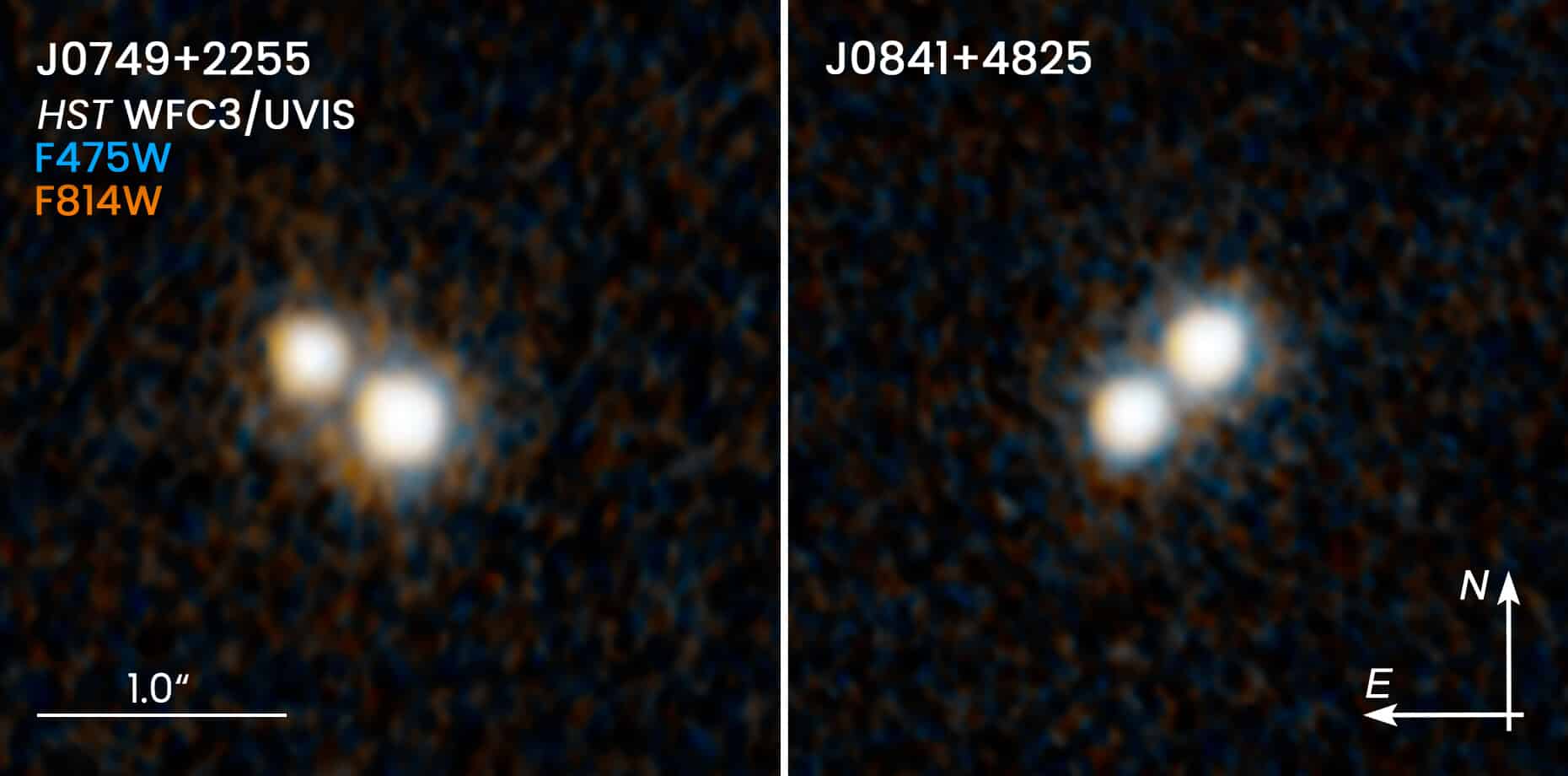
Two pairs of quasars that existed 10 billion years ago (taken by Hubble Space Telescope) - By ESA/Hubble, CC BY 4.0, Link
Cosmic Microwave Background
In 1965, two researchers working at Bell Laboratories, while trying to build a radio receiver, stumbled upon Cosmic Microwave Background (CMB), a noise that came uniformly from all directions in space. Big bang theory explains CMB as the radiation that was emitted when the universe was still young. CMB radiation was emitted by the universe almost 400,000 years after the big bang happened. The universe at that time was starting to cool down from a temperature of 273 million degrees.
Since then, the universe has been expanding and cooling down. So, the CMB has also cooled down to a temperature of -273.15°C today. The big bang theory explained CMB as relic radiation from the time the universe was young. In other words, CMB represents the heat/radiation left from the big bang. But since no astronomical body in the present emits such radiation, steady-state theory, which believes that the universe has remained the same forever, was not able to explain the presence of CMB.
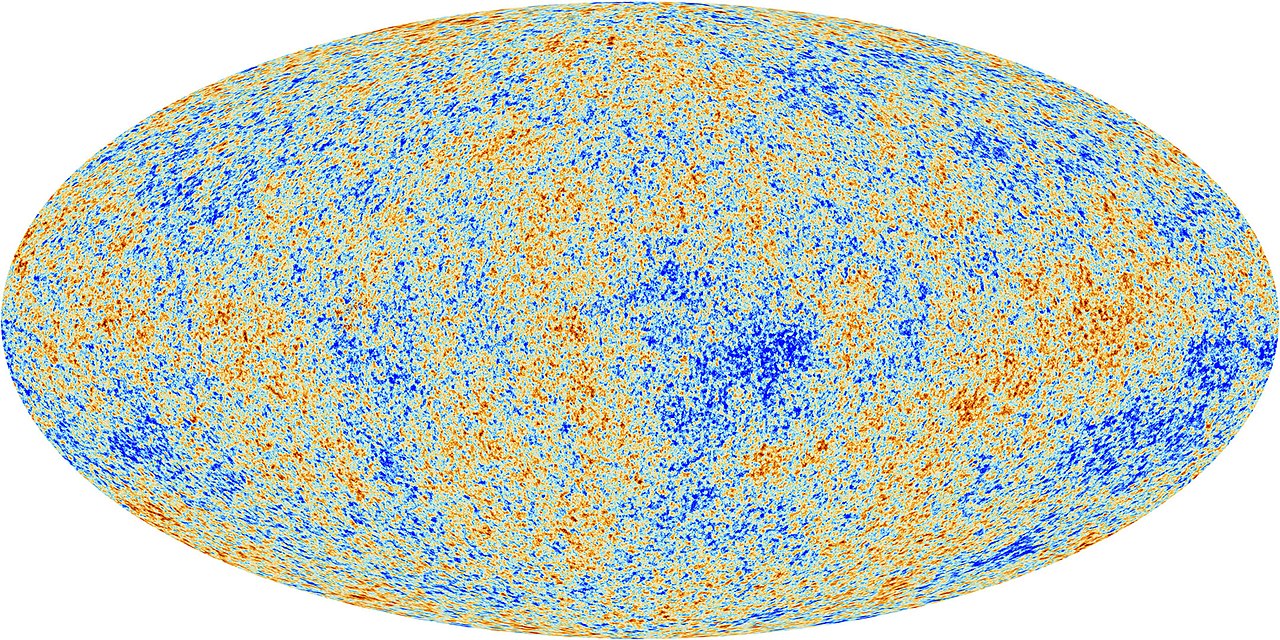
The Cosmic Microwave Background of the night sky as seen from the Planck satellite - By European Space Agency - https://www.esa.int/ESA_Multimedia/Images/2013/03/Planck_CMB, CC BY-SA 4.0, Link
Thus, in the 1960s, due to the discovery of Quasars and CMB, the steady-state theory was disproved. Since then, the big bang theory has been widely accepted as the theory explaining the origin of the universe.
